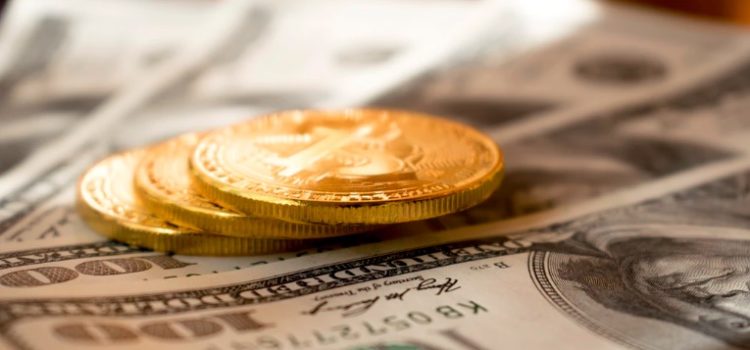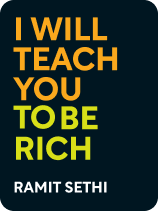

This article is an excerpt from the Shortform book guide to "I Will Teach You to Be Rich" by Ramit Sethi. Shortform has the world's best summaries and analyses of books you should be reading.
Like this article? Sign up for a free trial here .
What makes a “good” bank? What are some things you need to consider when choosing where to do your banking?
Taking a little bit of time to choose a good bank now will save you time, money, and frustration down the line. There are many things to consider when choosing a bank, fees and reputation being the most reliable indicators of a bank’s trustworthiness.
In this article, you’ll learn how banks make money off their customers and how to tell the difference between trustworthy banks and predatory banks.
Choosing the Best Banks
There are several things to consider when choosing a bank:
Low fees are an important component. Fees are how banks make a huge portion of their profits—in 2017, banks made a cool $34 billion from overdraft fees alone—so low fees are a good sign that a particular bank isn’t trying to squeeze more money out of you for their own benefit. For example, Bank of America has a reputation for exorbitant fees on every kind of account (and has even taken customers to court over fees that the bank mistakenly levied).
In addition to fees, a bank’s history and reputation are important. Whether you’re evaluating your existing bank accounts or searching for a new one, keep in mind that banks are businesses, and some have a better customer service track record than others. Before you choose where to keep your money, look at each bank’s history: Do they charge ludicrous fees or push unnecessary products? Even worse, have they ever been accused of fraud? If so, you can assume that pattern will continue, and you’re much better off choosing a bank with a better reputation.
- For example, federal regulators fined Wells Fargo $1 billion after they admitted to opening unauthorized accounts for 3.5 million people as well as forcing 570,000 customers to buy auto insurance that they didn’t need. Even worse, 20,000 of those customers ultimately had their cars repossessed because of Wells Fargo’s predatory tactics.
On the other hand, some banks have a solid reputation for honesty and integrity. These companies put their clients first and focus on customer service rather than relying on exorbitant fees to make their money. Schwab and Vanguard both meet these high standards—they offer low fees, solid benefits, and don’t push unnecessary products—which is why Sethi personally uses and recommends them. When you’re looking for a new bank, look for three things:
- Trust. While major scandals like Wells Fargo’s are rare, you should still do your research before deciding which banks to trust. Start by asking your friends which banks they personally trust. Then, browse the websites of those banks. Keep an eye out for excessive fees, minimum required balances, or misleading descriptions of different accounts. Make sure their customer service department is available 24/7 in case you run into trouble.
- Convenience. If the bank’s website, app, or other services aren’t convenient to use, you’ll be far less likely to actually use them. The goal here is to set up a financial system that will eventually run itself, so you want to start with bank accounts that are as convenient as possible.
- Features. Make sure the bank offers the basic features you’ll need most: competitive interest rates, free transfers to external accounts, and free bill pay. Keep in mind your own deposit needs, too: If you deposit cash often, you’ll need a bank with a local physical location. If you deposit checks often, you’ll probably want a bank that allows mobile check deposits through their app.
- One important caveat: Competitive interest rates are important, but if you spot a higher rate at a different bank after you’ve set up accounts you’re generally happy with, don’t switch accounts to chase those high interest rates. Those offers are often introductory and expire within a few months, so you’ll waste a lot of time chasing a boost of just a few dollars in interest. In terms of financial gains, you’ll be much better off using that time to set up investment accounts instead (as we’ll discuss in Chapter 3).
Switching Banks
If you already have an account with Bank of America or Wells Fargo, or you do some digging and discover that your current bank is charging you excessive fees or has a pattern of bad behavior, it’s time to switch.
For many people, the idea of opening a new bank account, transferring money, and closing the old one is so daunting that they give up and stay with their existing bank, even if it’s a terrible one. However, banks are such a fundamental part of your financial system that even if there are just a few minor issues with your current bank (like a fee they refuse to waive), those minor annoyances can become major problems once your net worth increases. You’re far better off investing one afternoon now to set up a solid foundation that will save you headaches for decades to come.
Choosing Your Accounts
Now that you know which banks to avoid entirely, let’s focus on the specific types of accounts you’ll need to open: a checking account and a savings account.
Checking accounts are set up to make withdrawing money easy, whether from an ATM or through transfers to other accounts. It’s also the account where your paycheck will land first before being split up into savings, investments, and spending money.
Savings accounts, on the other hand, aren’t designed for frequent withdrawals. You’ll use your savings account to save up for short- to mid-term goals (like a trip or an emergency fund)—once you deposit money into that account, you likely won’t withdraw it until you’ve met your full savings goal.
Another benefit to using a dedicated account for your savings goals (instead of just keeping that money in your checking account) is that it’s much less tempting to dip into that money for other things. For example, if you’re saving up for a car and you keep that money in a savings account at a different bank than your checking account, it will be so inconvenient to have to transfer the money between banks that you’ll think twice before borrowing from that account for a shopping spree (and derailing your savings goal in the process).
Precisely how you set up your checking and savings accounts depends on your personality and how hands-on you want to be with managing your money. There are three possible setups:
- A checking account and a savings account at the same local bank. This is the most basic option. If this is the setup you have now and you decide to stick with it, make sure to double check that you’re not paying any fees on either account. (Technically, you could use a credit union, too, but Sethi doesn’t recommend them—their customer-owned structure is a fantastic alternative to predatory big banks, but their services often just can’t measure up to the features that larger banks offer).
- A local bank checking account and an online savings account. For most people, this is the best option. It’s the best of both worlds—you have the convenience of a local bank for your checking account (which is especially important if you need to make cash deposits), plus the higher interest rates that online savings accounts offer.
- Multiple checkings and savings accounts at multiple banks. This option offers the most customization, but it’s also the most confusing. However, if you’re someone who loves personal finance and wants to find the best possible interest rates, the added confusion of having multiple accounts might be worth it.
Once you decide on which setup works for you, it’s time to find the exact accounts you’ll use. In the following two sections, you’ll see the checking and savings accounts that Sethi recommends, as well as the accounts he uses personally.
Checking Accounts
Your checking account is one of the most important components of your financial system because it’s the first place your money lands before it gets sent off to your credit card, bills, savings, and investments each month. Later on in this summary, you’ll learn how to set up automatic transfers for all of those, so you won’t have to worry about your checking account very often—it just needs to be a solid, fee-free first step in your financial system.
The Best Checking Accounts
- Schwab Bank Investor Checking with Schwab One Brokerage Account through Charles Schwab Bank. Sethi uses this account personally and considers it the best on the market. This account boasts an impressive list of features, like zero fees, unlimited ATM fee reimbursements, overdraft protection, and free checks.
- The Investor Checking account is unique in that it’s linked to a brokerage (investment) account. That means you’ll have to open a Schwab brokerage account in order to access all the benefits of their checking account—but you don’t actually have to use the brokerage account in order to get those benefits (and don’t worry, you won’t be charged any fees for leaving the brokerage account empty and inactive).
- A no fee, no minimum account at your local bank. This is especially helpful if you need to deposit cash frequently (you can’t make cash deposits into the Schwab Investor Checking account). Keep in mind that you may have to set up direct deposit in order to have fees waived at local banks. (If you’re a college student, ask about student accounts. These are typically barebones accounts that offer zero fees and few fancy add-on services.)
Savings Accounts
Your savings account is where you’ll save up for short- and mid-term savings goals, up to five years away (for longer-term savings goals, you’ll use your investment accounts, which we’ll cover later in this summary). The main benefit to keeping this money in a savings account rather than simply in your checking account is that savings accounts have higher interest rates, so your money will be able to grow while you save. However, those interest rates are still rarely high enough to make a huge difference.
- For example, if you have $5,000 in a savings account that offers a 0.5% interest rate, you’ll earn $25 per year in interest. If you have that same $5,000 in an account with a 3% interest rate, you’ll earn $150 per year in interest. Earning that extra $125 per year is helpful, certainly—but because the bulk of your money will be in investment accounts that earn an average of 8% each year, that extra $125 doesn’t actually make that big a difference in your overall wealth (especially when you take inflation into account, which can often make the interest you accrue worth even less as the value of a dollar changes).
As you research savings accounts, stick to online banks rather than “Big Banks” with physical locations. You’ll earn more interest and face fewer hurdles to getting your account up and running.
The Best Savings Accounts
- Capital One 360 Savings. This is the savings account Sethi uses personally. Aside from having no fees and no minimums, the main benefit of this account is that you can set up sub-accounts to save up for specific goals (like a wedding or emergency fund).
- Other savings accounts that have no fees, no minimums, and the ability to set up sub-accounts include:
- Ally Online Savings Account
- Marcus by Goldman Sachs
- American Express Personal Savings

———End of Preview———
Like what you just read? Read the rest of the world's best book summary and analysis of Ramit Sethi's "I Will Teach You to Be Rich" at Shortform .
Here's what you'll find in our full I Will Teach You to Be Rich summary :
- The small steps you can take towards living a "rich life"
- How to choose the right bank account and manage your credit cards
- How to create a financial system that grows your money automatically






